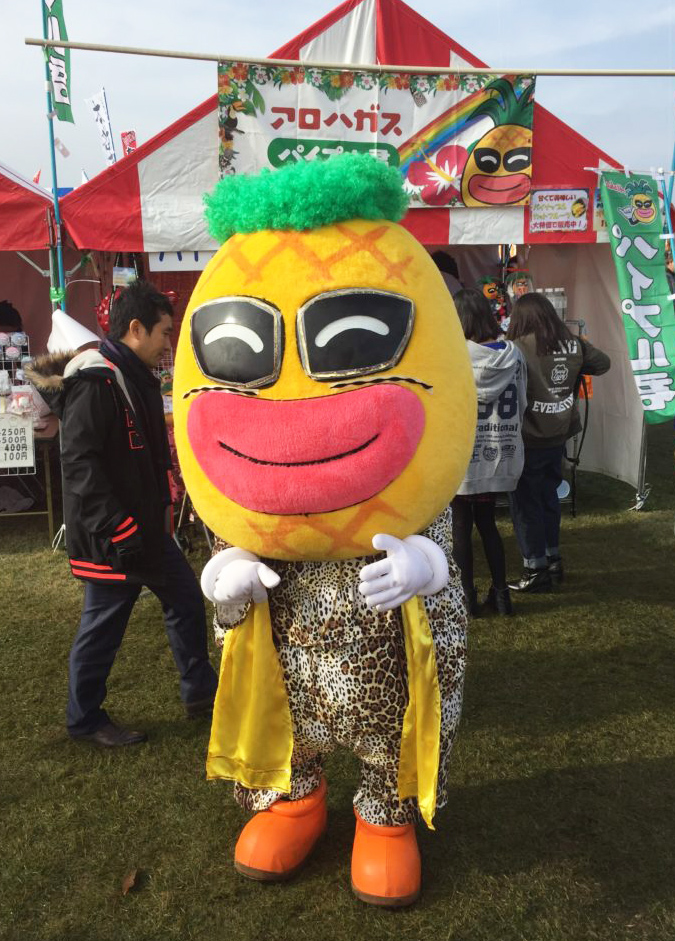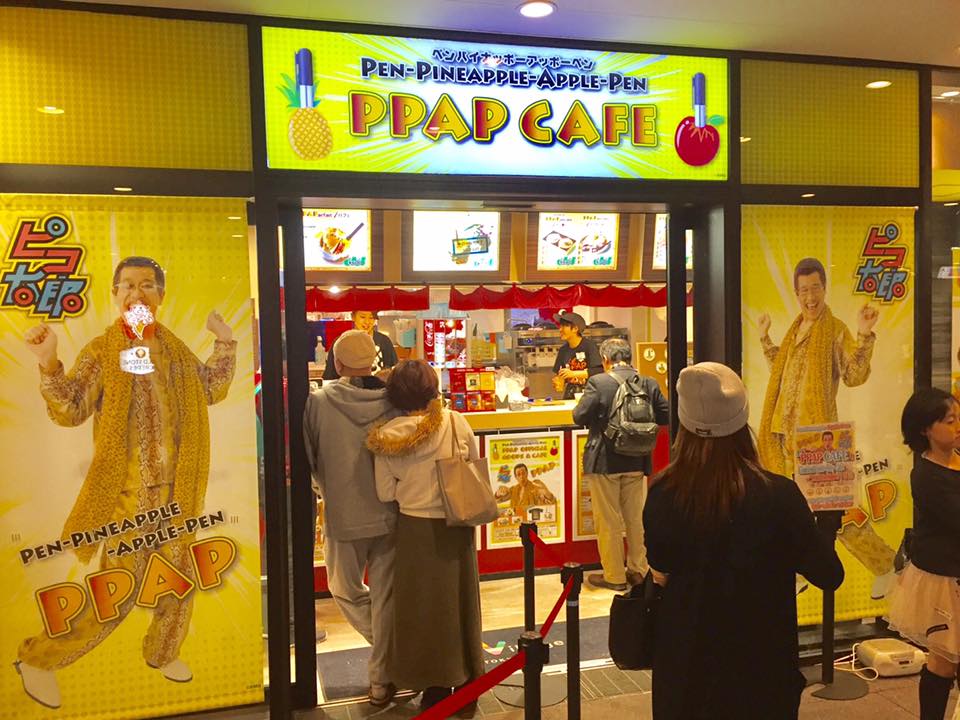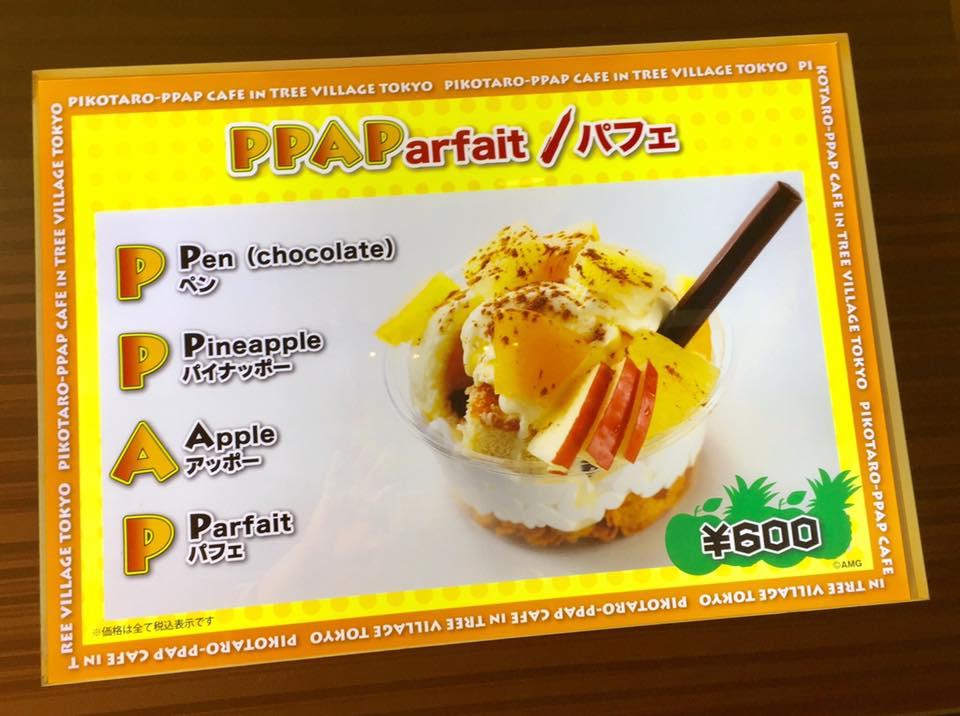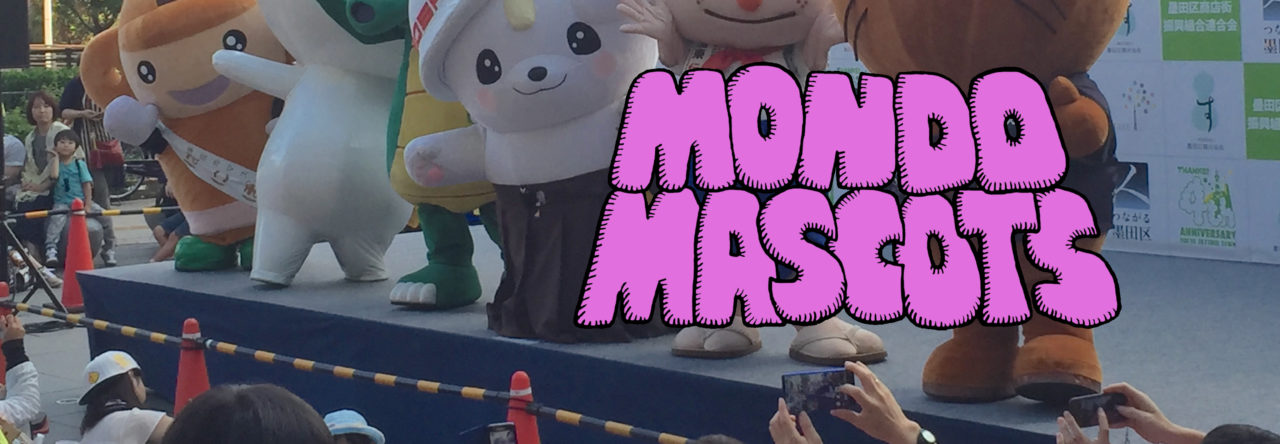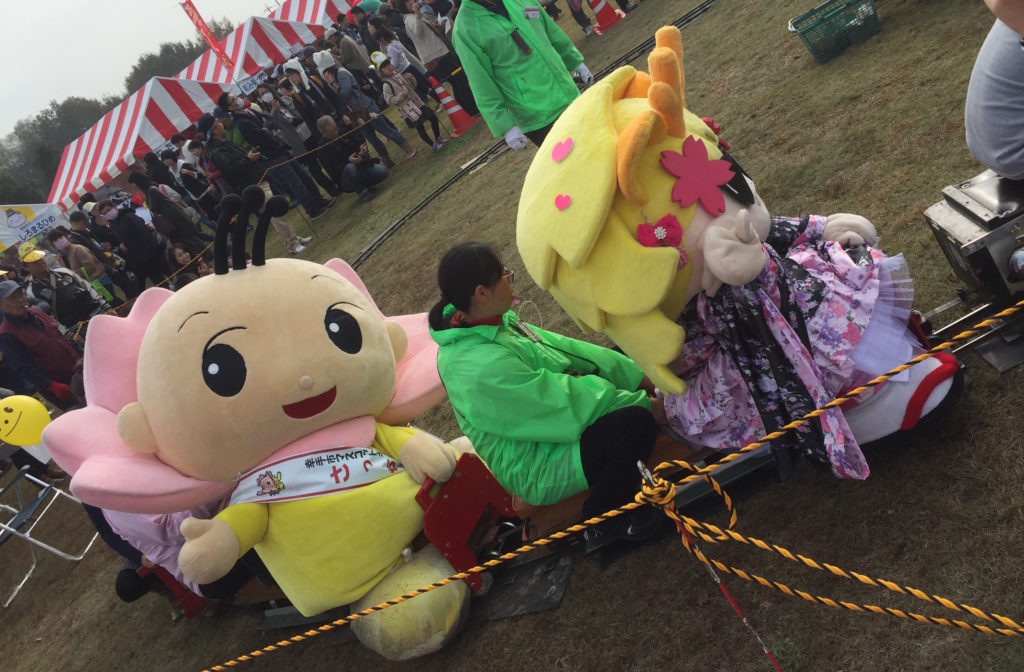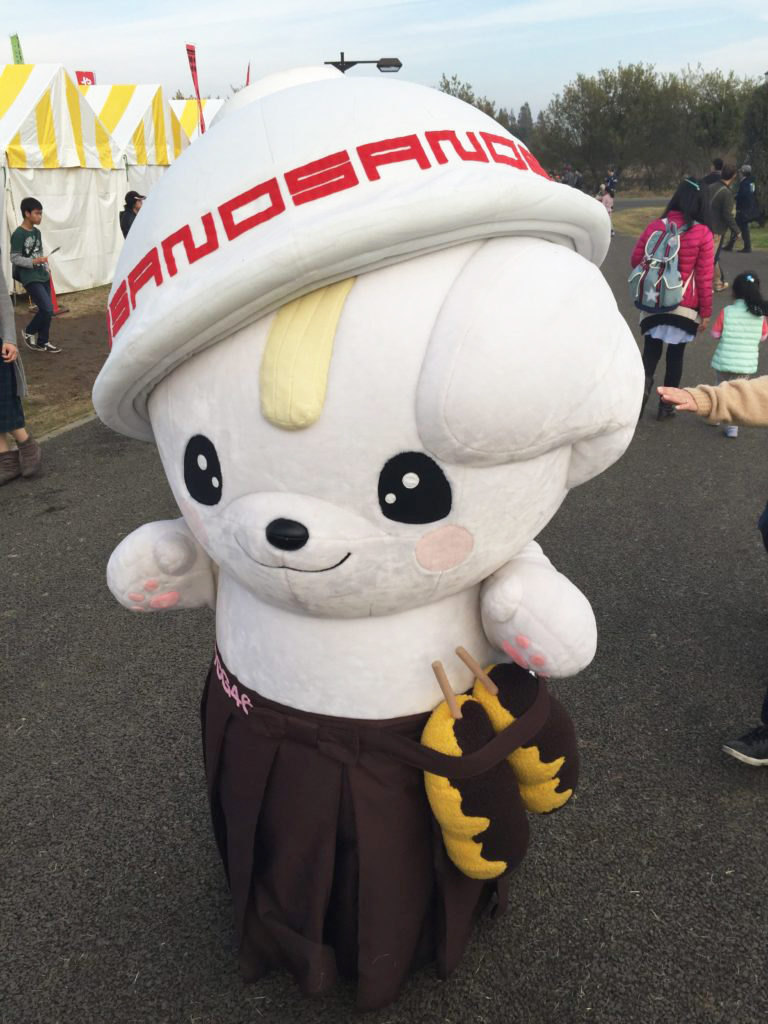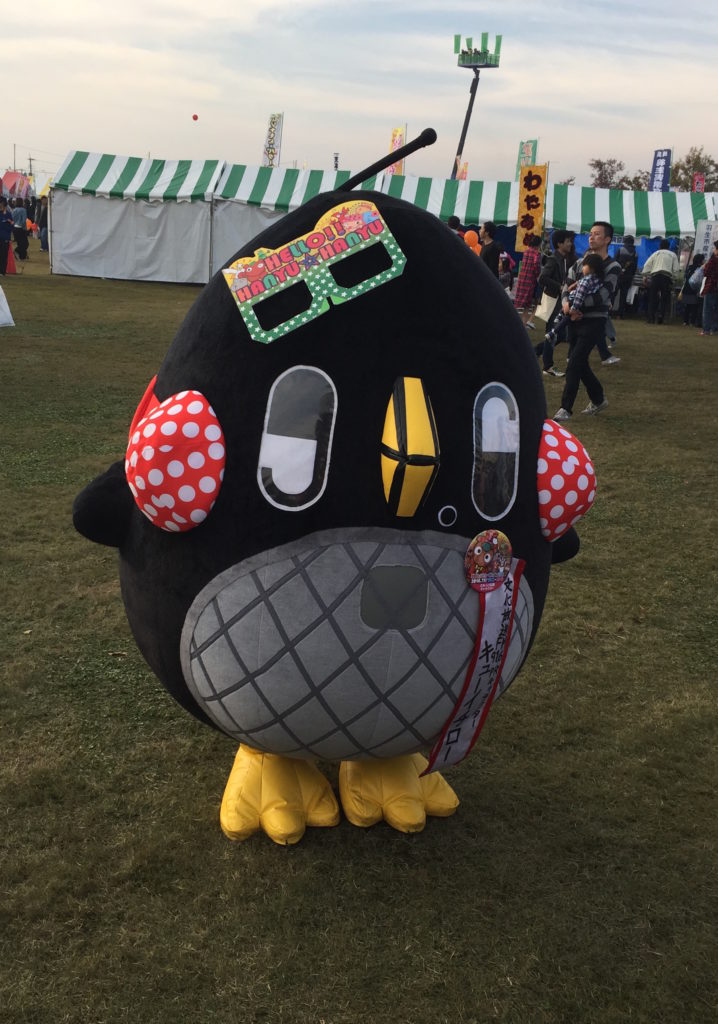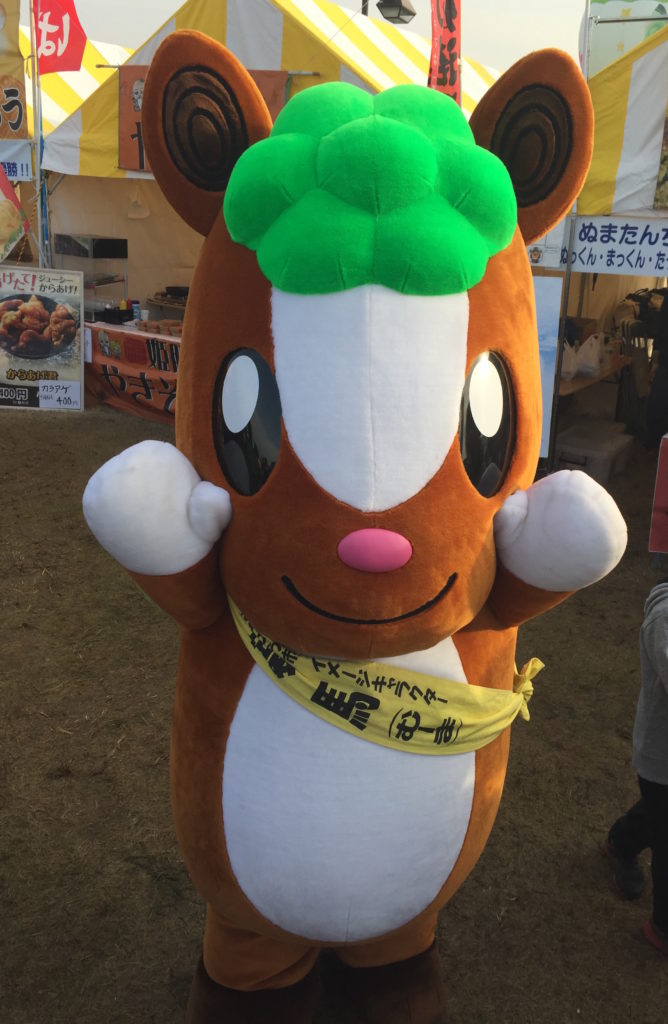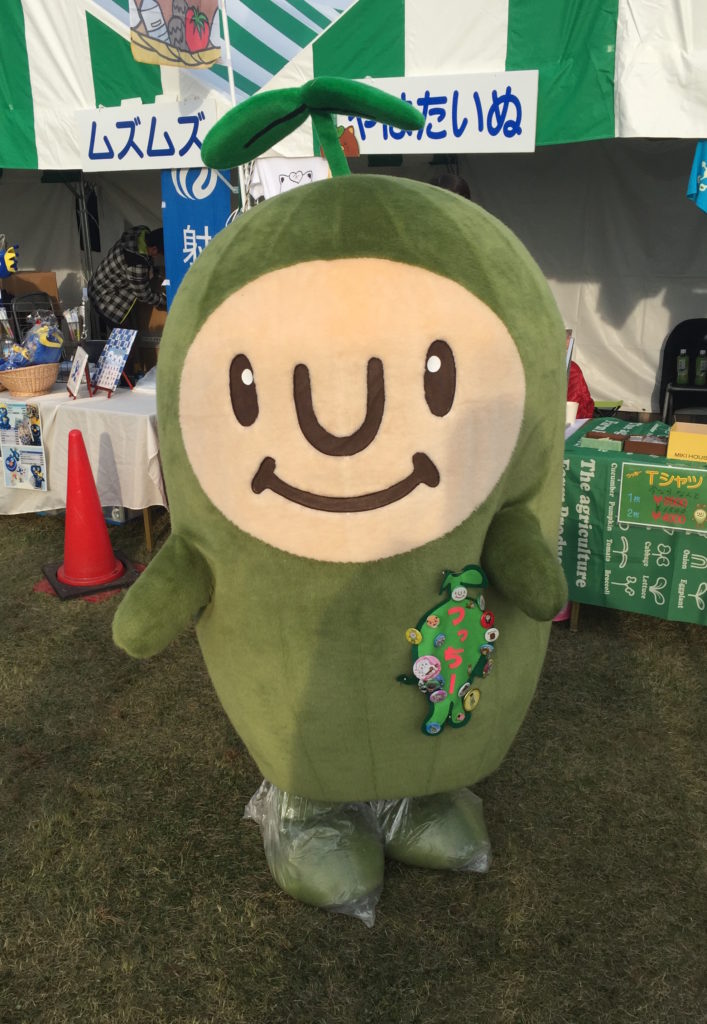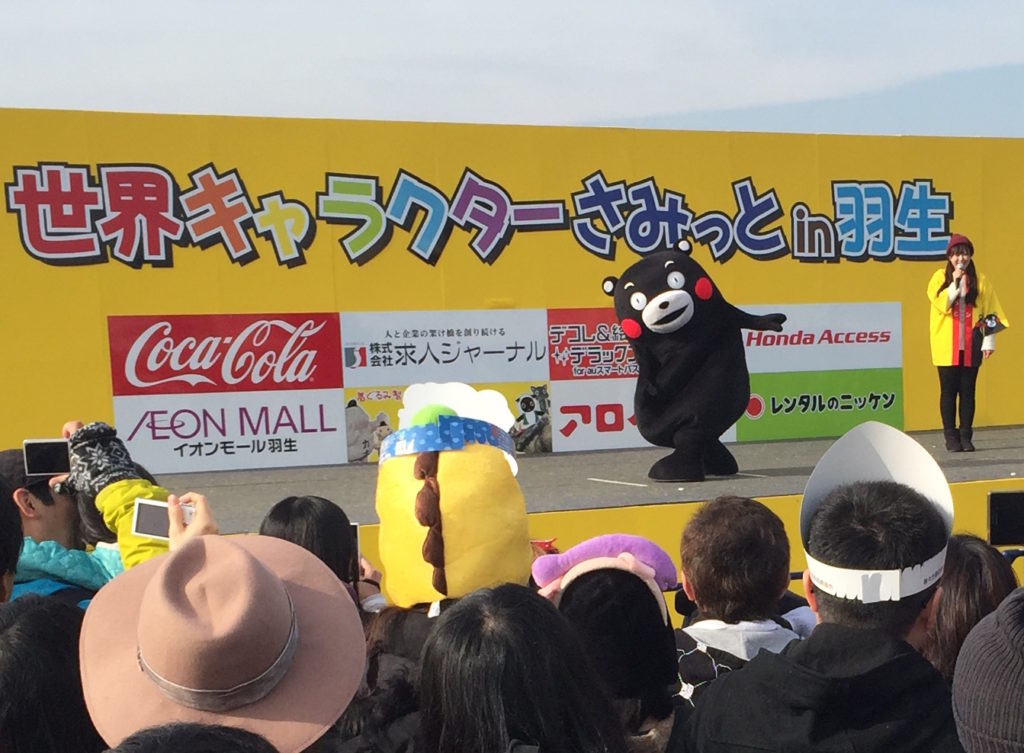The most prominent and popular “yuruchara” in Japan are the regional mascots, or gotōchi-kyara (loyal characters). Prefectures, cities, and districts throughout the country each have their own cuddly character.

Kumamon visits victims of the Kumamoto Earthquake
Perhaps the most famous of these regional mascots is Kumamon, a large black bear from Kumamoto. Since his introduction in 2010 to promote the Kyushu Shinkansen, billions of dollars have been made from the sale of Kumamon merchandise, from stickers to T-shirts, to dildos. (I’m not sure the last one exists, to be honest.)
The mascots tend to be based on local farm produce or wildlife, or puns on the names of the area they’re from. (For example, Kumamon is a bear because he’s from Kumamoto and “kuma” means bear in Japanese.) Combinations of local produce and animals result in truly bizarre and quirky creations, like Melon Kuma, the freakish melon-headed bear of Yubari, Hokkaido. Others are notable for the “kimo-kawaii” ineptitude of their design, like the weird humanoid, Okazaemon from Okazaki city in Aichi.

Okazaemon

Melon Kuma attacks Kumamon
Even more popular than Kumamon is Funassyi, a hyperactive pear from Funabashi, Chiba, who is famous for his exuberant gestures and stunts. Although Funassyi isn’t even strictly an official character, the Funabashi government having declined to adopt him a mascot, his popularity has grown immensely in the last few years. This has made his furniture-store-owner creator (instead of the Funabashi government) incredibly rich. A natural rule-breaker, Funassyi’s unofficial status is a tribute to his anarchic spirit. The word “yurui” in yuru-chara means “loose”, or “laid-back”, which Funassyi is anything but. The exuberant acrobat inside the costume deserves all the credit for making the character so appealing. Funassyi has even been featured on John Oliver’s “Last Week Tonight” show in America, and has appeared live on stage with Ozzy Osbourne.

Funassyi with Ozzy
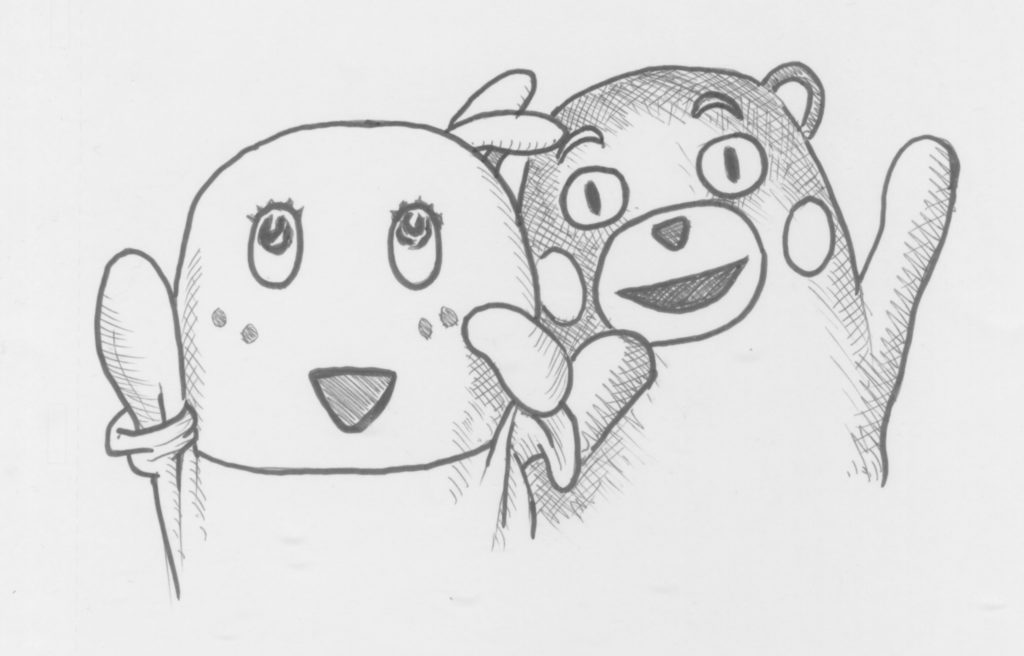
My doodle of Kumamon and Funyassi.
In March I noticed that a gotōchi-kyara expo was to be held in Oshiage, Tokyo, at the foot of the gargantuan Sky Tree building. Because I like nerding out over these characters and I like to draw them myself, I went along, excited at the opportunity to observe ninety diverse yuruchara in “the wild.” There was a veritable carnival of characters to be spotted. I arrived too late to see the highly in-demand Funyassi’s brief 10AM appearance, but otherwise I was not disappointed.
The day’s events included a stage show, in which a young woman “interviewed” the characters on an outdoor stage—I would question the wisdom of this choice, since most of them don’t actually talk.
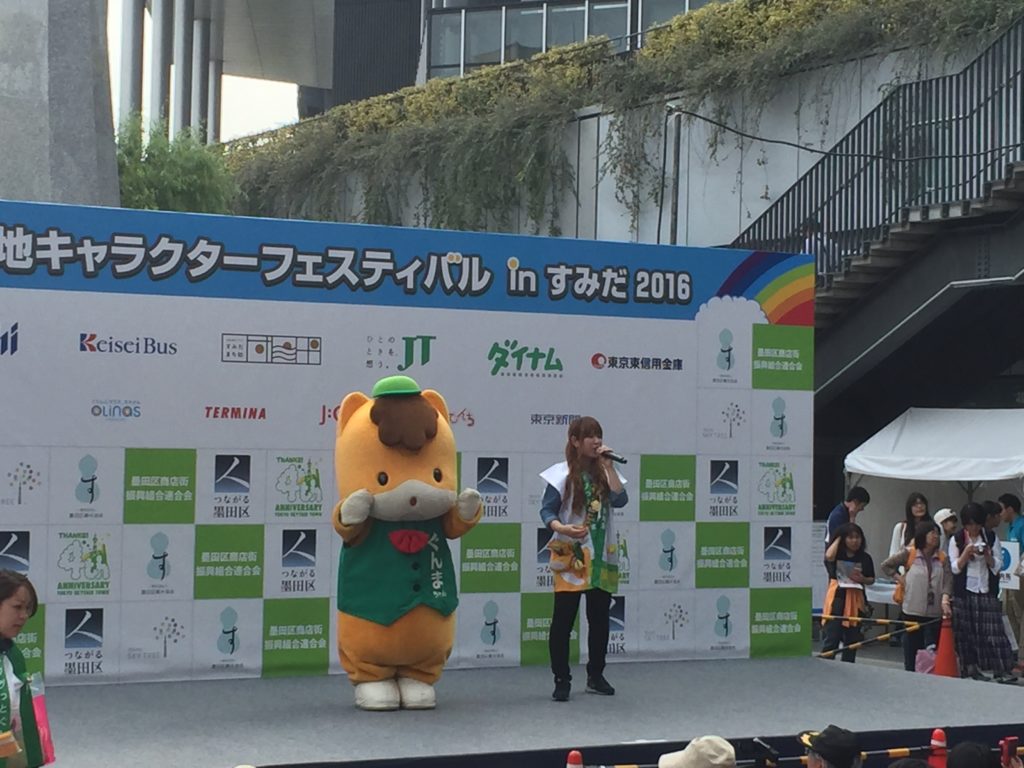
Gunma-Chan
Simultaneously, dozens of gotōchi-kyara were congregated in a nearby park, to meet and greet their fans. Wandering around and shaking hands with these beasts, one by one, was tremendous fun. In true Japanese fashion, most of them were handing out business cards.
The main event on the calendar for Japanese mascots is the annual “Yuruchara Grand Prix”, which was this year held in Ehime prefecture, Shikoku, in November. At that event, almost every gotōchi-kyara you could think of was in attendance, (eternally busy Funassyi being an exception). Votes opened in July for this year’s winner and flooded in by the thousands. The well-deserved victor was Shinjo-Kun, the mascot for Susaki city in Kôchi. Apparently, Shinjo-Kun is modelled on an extinct species of river otter last seen in the Shinjo river in Susaki, and he wears a bowl of local nabeyaki ramen on his head as a hat.

Shinjo-Kun, at the Sumida Gotōchi-kyara Festival in March.
Claiming the mantle of Character of the Year is a great honour, for both the mascot’s creator and the town it represents.
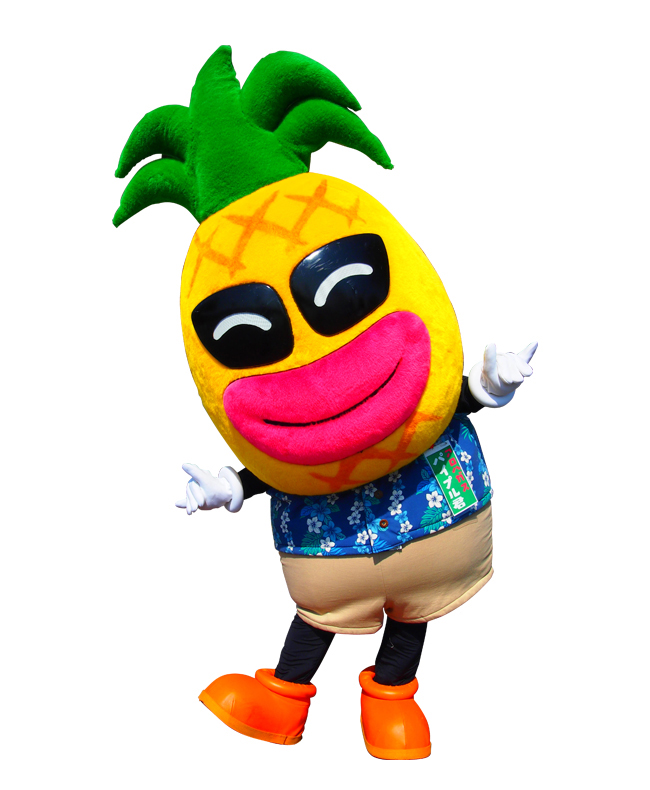 I ran into Piple-Kun at the Yuru-chara festival on Sunday. He appears to have been repurposed as a cheerleader for Pikotaro, singer of the PPAP song, complete with the leopard skin shirt and permed hair. He even got up on stage and sang Pen-Pineapple-Apple-Pen.
I ran into Piple-Kun at the Yuru-chara festival on Sunday. He appears to have been repurposed as a cheerleader for Pikotaro, singer of the PPAP song, complete with the leopard skin shirt and permed hair. He even got up on stage and sang Pen-Pineapple-Apple-Pen.